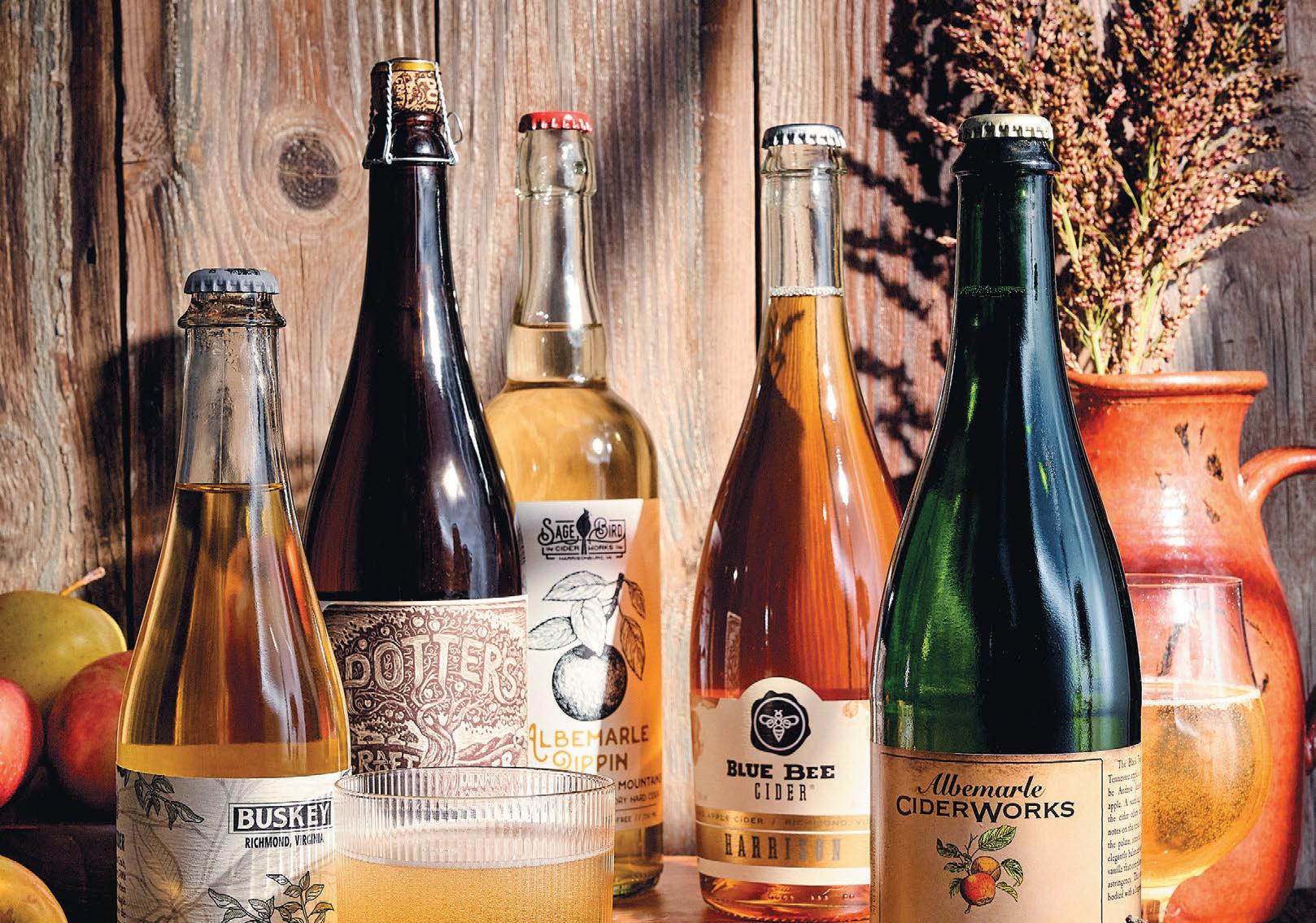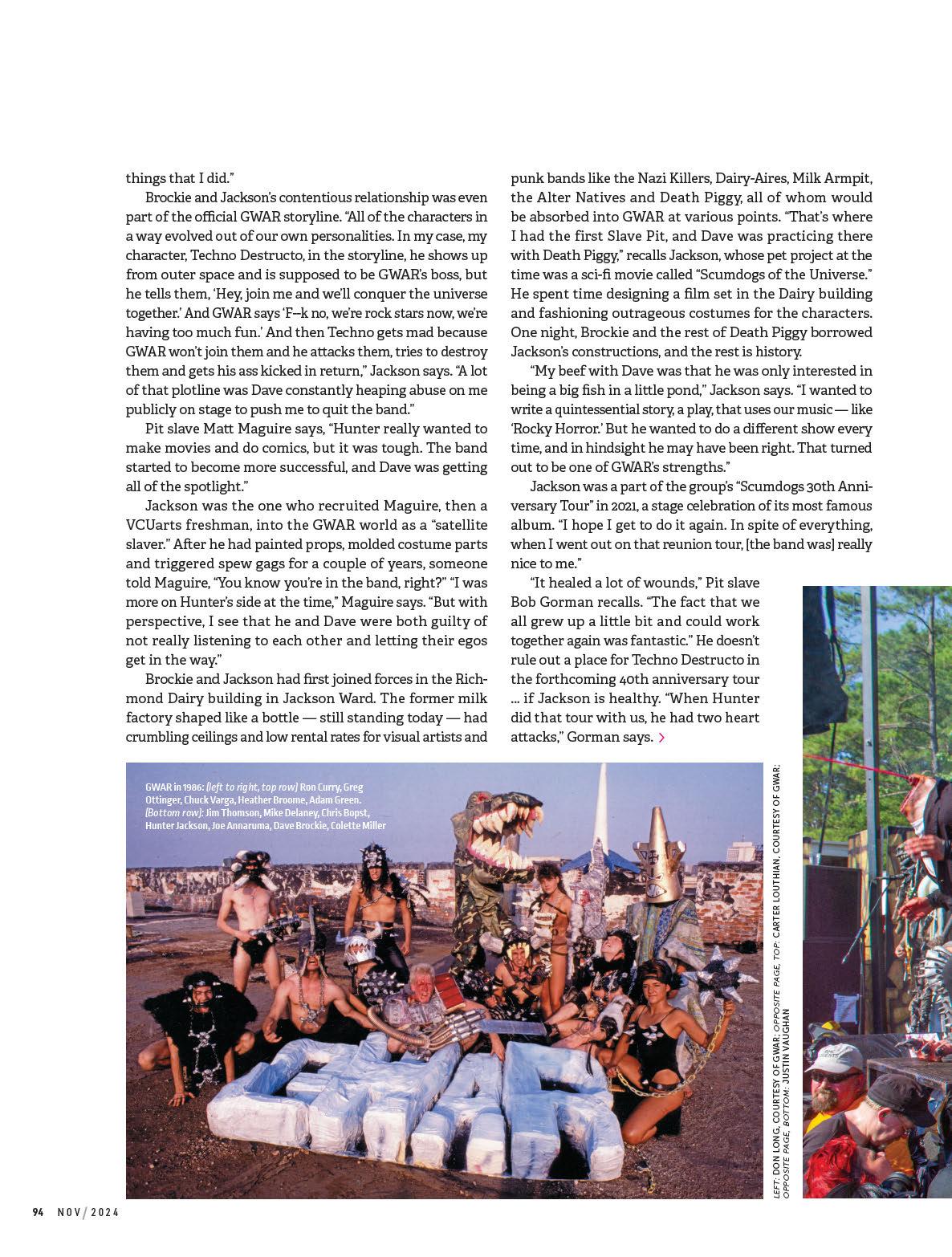














An exploration of nonprofits and volunteering in Richmond By Paula Peters Chambers and Kevin Johnson
Virginia’s heritage fruit continues to shape a beverage industry By Eileen Mellon
Forty years of putrid pageantry from GWAR, Richmond’s own alien rock outfit By Don Harrison




























































source of charitable services to the government to the nonprofit private sector. It’s an interesting evolution of how we organize and help each other.”
People also need assistance in times of crisis that exist beyond their control.
“There are global or country-size issues that will happen that may affect someone working paycheck to paycheck,” says Katina Williams, the local United Way’s chief impact officer. “Someone may have saved money by not purchasing insurance to recover from a flood. The larger issues only surface when the flood actually happens.”
Greta Harris, president and CEO of the Be er Housing Coalition, notes that, from a housing security standpoint, the country still hasn’t recovered from the Great Recession that began in December 2007. “We do not have capacity; our basic economic formula of supply and demand is not in balance,” she says. “This is one key reason, among others, that is driving prices up. Housing has always been tough for those on the lower economic spectrum … and current market conditions are starting to impact moderate- and middle-income individuals who used to be isolated from economic ebbs and flows. It’s a real imbalance that will take time, resources and political will to allow different strategies to be fully implemented.”
Another factor to be considered is a history of socioeconomic inequities, many of which have been race-based.
“There are systemic issues that are a part of our society that were very intentional and have lasting, generational effects,” Williams says. “This happened with 1930s Jim Crow [policies], redlining, education, health, housing, transportation. It will take decades to correct that, assuming everybody’s of the same accord.”
Harris notes that structural inequities harm everyone, not just those directly affected. “If you had a business

and 25% of your workers were nonproductive, would you have the most successful business you aspire to have?” she says. “When we look regionally, we have had generational, deep-rooted poverty for a small segment of our community. There’s a host of historical reasons and intentional actions that help hold people down and have created horrific realities for families. My wish is for people to say that every individual has value and … we’re going to work together to have a strategy that helps people get toward a pathway toward economic mobility so they can be captains of their own fate and have success in their life as they define it.”
DOES SIZE MATTER?
Asking if a large nonprofit is more effective than a small nonprofit is a li le like asking whether the chicken or the egg came first. Charitable organizations of all sizes make a difference, says Susan Halle , director of philanthropy for the Bob and Anna Lou Schaberg Foundation, which supports capacity building for nonprofits by focusing on internal structure, operations and sustainability. “We support organizations that
have larger staffs, a physical space and function like larger institutions; we also support grassroots organizations with limited infrastructures,” Halle says. “We think there’s an important role for all. Institutional organizations o en have the capacity to bring things to scale, while grassroots organizations often have the ability to elevate the voice of residents they are serving and working alongside.”
Like any organization, nonprofits can struggle with funding and staffing issues. Halle says that, in recent years, human resources issues have surged. “Out of the pandemic, it became clear that salaries and benefits weren’t meeting the services people were providing,” she says. “We supported a sector-wide compensation and benefits study and had many conversations about HR needs. Then we provided tools for nonprofit partners so they can be er support their staff and then support services in the community.”
It’s an “antiquated notion” to think that employees of nonprofits are happy to take less in pay because they are doing good for others, Hallett says. “I can’t think of a time when I’ve crossed









































































